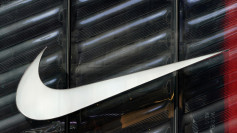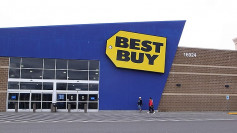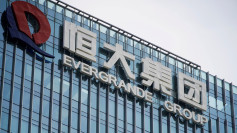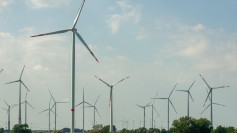Nike, Inc has taken the wraps off its second-generation "self-lacing shoe," or as the company calls it, a "mobile sports research lab" for the feet.
Jayson Tatum (Number 0), a small forward for the Boston Celtics, will debut the self-lacing shoe called "Nike Adapt BB" in the game against the Toronto Raptors on Wednesday.
Nike Adapt BB creates a truly custom fit by combining an advanced power-lacing system, an app, and continually updated firmware. It pairs a smartphone with the self-lacing shoe to adapt to a wearer's foot at the touch of a button. BB stands for basketball and it identifies who this shoe was developed for.
Nike says Adapt BB has a near-symbiotic relationship with its digital app thanks to opt-in firmware updates. It explained that when a player steps into the Nike Adapt BB, a custom motor and gear train senses the tension needed by the foot and adjusts accordingly to keep the foot snug.
The tensile strength of the underfoot lacing can pull 32 pounds of force to secure the foot throughout a range of movement. FitAdapt tech, the shoe's "brain" then kicks-in. A user can input different fit settings depending on different moments of a game by manual touch or by using the Nike Adapt app on a smartphone.
For example, a player can loosen the shoe before tightening it up as he re-enters the game after a time-out. Nike said varying the fit is necessary because a foot can expand almost a half-size during play over the course of a basketball game. A level of fit that's comfortable at one point might feel constrictive 20 or so minutes later.
Adapt BB enables these minute changes in tightness using the companion app, leading to 40% more "lockdown" for feet.
The app also lets users change the color of the glowing twin dots on the midsole of the shoe to 14 different colors. Nike will begin offering the Adapt BB in February for $350, or less than half the Hyperadapt's original price of $720.
Adapt BB comes with a wireless charging mat that can charge the shoes in three hours for two weeks of wear time. The new shoe is also connected.
It can send data about usage and analytics back to Nike, should users allow that. The data might also eventually be used to track athletes' movement and performance, which Nike says can help it offer new products or services to customers.
"Say goodbye to the shoelace," said Michael Donaghu, Nike's director of global footwear innovation.
Donaghu said the new shoe is all about fit and is targeted directly at basketball players.






